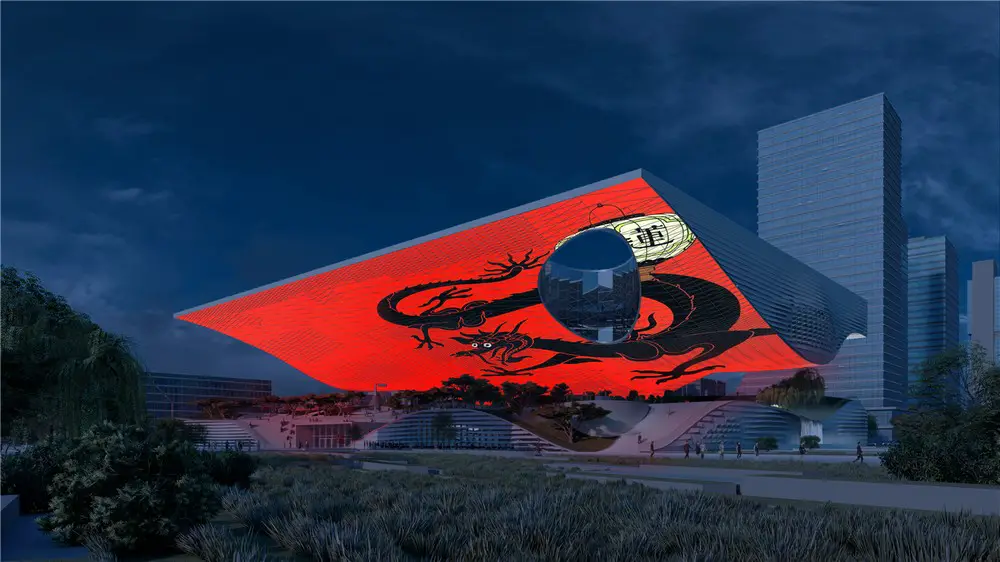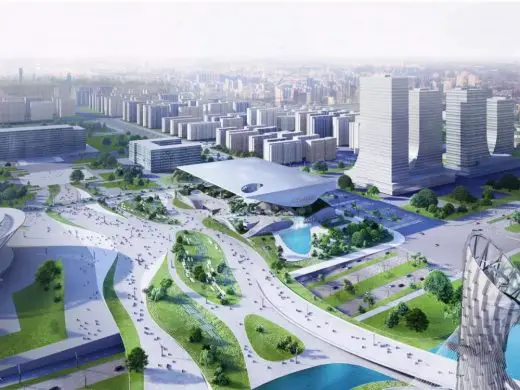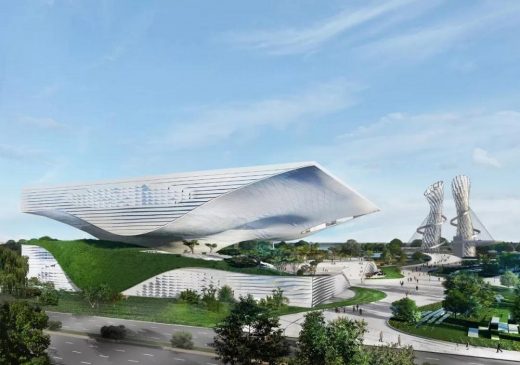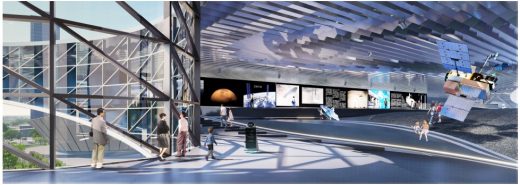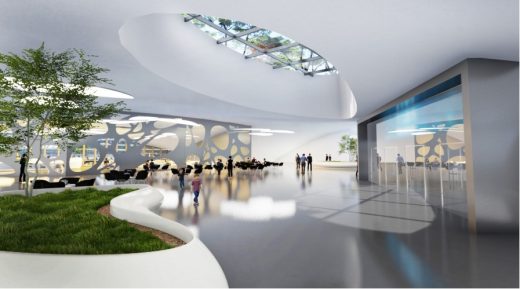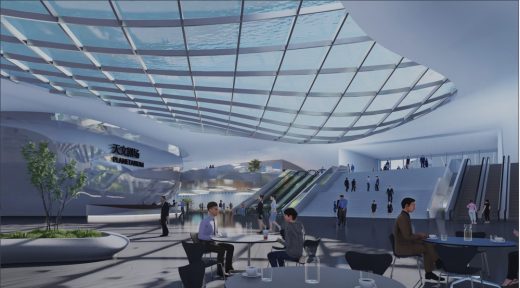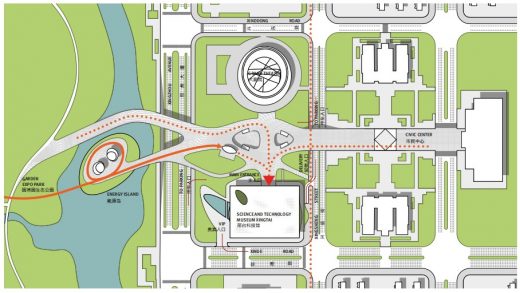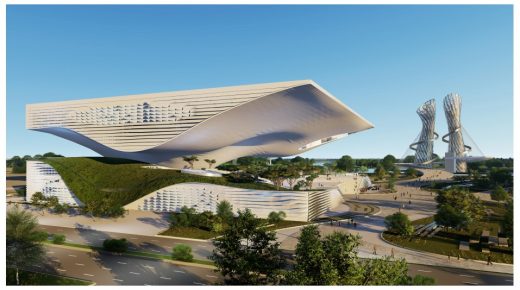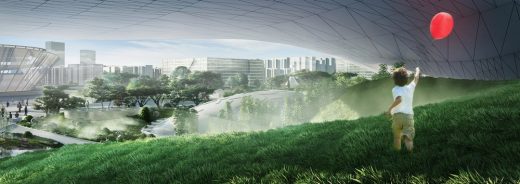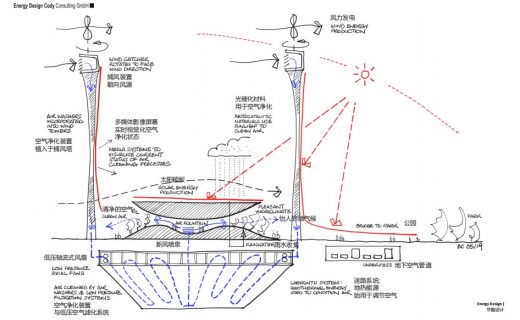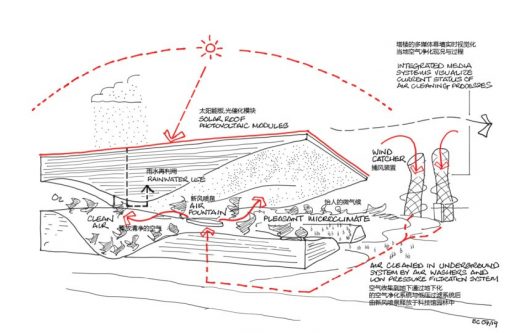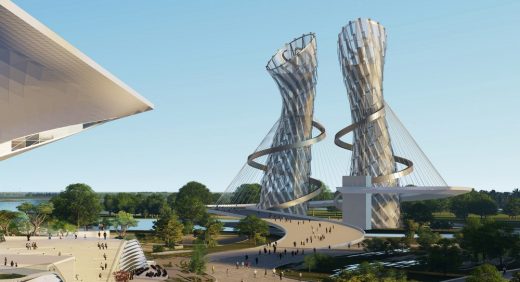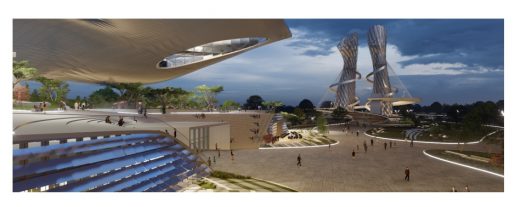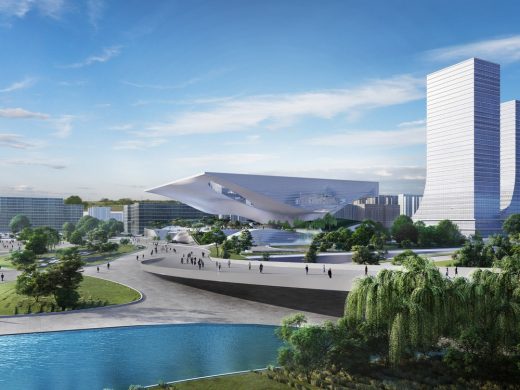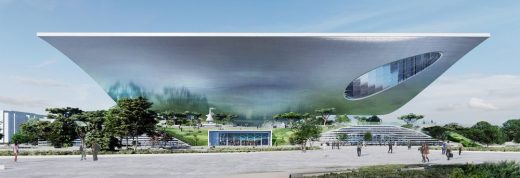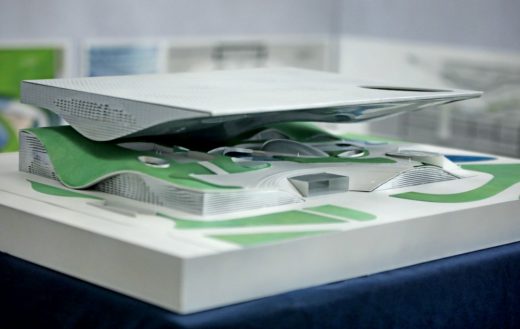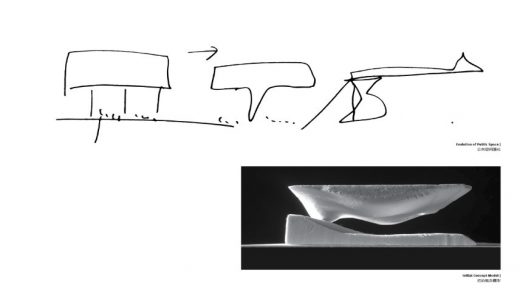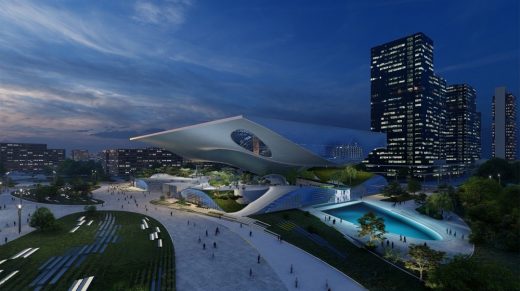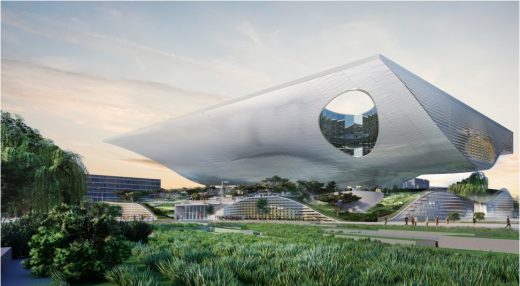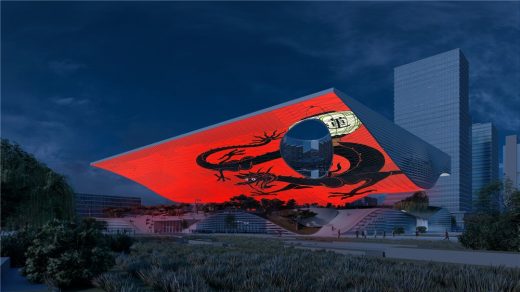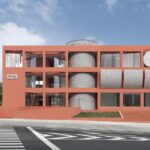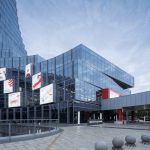Xingtai Science and Technology Museum, Hebei Province Cultural Center, Chinese Architecture, Images
Xingtai Science and Technology Museum in the Hebei Province
New Public Building Development in China design by COOP HIMMELB(L)AU
14 Aug 2019
Xingtai Science and Technology Museum
Architects: COOP HIMMELB(L)AU
Location: Hebei Province, China
COOP HIMMELB(L)AU won the Xingtai Science and Technology Museum International Architecture Design Competition
In the transformation of Xingdong New District as a development engine in Xingtai City, how can the Xingtai Science and Technology Museum be used as an opportunity to create a unique urban cultural card for Xingtai to achieve a win-win situation between architecture and city? The works of Coop Himmelblau continue the cultural life of Xingtai with scientific and innovative thinking.
The design adopts new structural concepts, practices the most advanced energy system, and reflects the rich traditional Chinese culture. Coop Himmelblau, as one of the four well-known construction teams invited by China Building Center, successfully won international design competition!
In 1968, Wolf D. Prix and Helmut Swiczinsky set up Coop Himmelblau in Austria. “Himmelblau” is a brand-new and Utopian fantasy name that has become a declaration to challenge the traditional architectural order. Since its inception, Coop Himmelblau has always played the role of “rebels”, however, the subversion of the existing ideas of architecture is not its ultimate goal. Through the practice of “making clouds”, Coop Himmelblau will continue to be open, perceptual, and natural.
The complex architectural concept is integrated into their design practice to create a new interpretation of the building. His masterpieces include: Martin Luther Church in Austria, BMW World in Munich, Germany, and “21 Mini Theatre Space” in Munich, Germany.
General Concept
Himmelblau use the image of flowing building to represent the dynamic approach of the scientific development in China. The aim of the project is to emphasise Xingtais role as a scientific and technological hotspot in the province of Hebei. Building up on Xingtais history of astronomers, engineers and other scientists, the project reflects past, current and future approaches of cutting edge economic, ecologic and building technologies.
The building will be designed with new structural concepts, hosting plus energy systems and will display the rich Chinese traditional culture, showcasing scientific and technological achievements the city, the province and china has offer.
Chinese garden, a space of perception
Himmelblau proposed to take the concept of the Chinese Garden into three dimensions and converts it into a three- dimensional space of perception. Referencing the Yangming School of Mind Philosophy, this spatial concept uses the notion of “Seeing by Walking” that proposes that the mind is stimulated while the body is in motion.
Thus the museum space is designed as a continuum with variable points of view, both linear and diagonal, to view art and to view the outside surroundings to stimulate thinking. Like a cloud elevating art, the museum space is formed through a densification of platforms and points of interest along an asymmetrical three- dimensional path.
Energy Design
The new Science and Technology Museum in Xingtai is designed to provide optimal environmental conditions for visitors and staff while minimizing energy demand via a combination of passive and active climate control strategies. The buildings design is however far more ambitious than conventional low-energy design.
The aim is to go beyond the boundaries of the building itself and improve the urban microclimate in the immediate surroundings. In this way, the design demonstrates the contribution which individual buildings can and must make to the city as a whole.
To this end, the design employs “Wind Towers”, which are used to capture the prevailing winds. These employ wind energy in combination with low pressure axial fans to cause the air to flow through an underground air-cleaning system, comprising air washers and a low-pressure air filtration system.
After the air is cleaned and tempered by the thermal mass of the ground, it enters the open-air public space created within the building volume through the “Air Fountain”, providing the urban area with clean air and a pleasant microclimate. Rainwater from the roof is collected and used in the air-cleaning process.
The energy required to power this air-cleaning system is provided entirely by renewable energy sources; alongside wind energy, solar electrical energy is generated by photovoltaic modules integrated into the buildings roof surface. These systems are an integral part of the exhibition concept of the new Science and Technology Museum.
Integrated media systems in the external surfaces of the wind towers inform the public of the current status of the air-cleaning process.
The museum spaces in the building itself are conditioned by all-air VAV (variable air volume) systems.
People are a major contributor to the space cooling loads and also determine the amount of fresh air to be provided, so that the load dependent reductions in supply vol- ume possible with a variable volume system provide a large energy saving potential. Highly efficient low-pressure air systems employ- ing energy recovery are employed throughout. Ice storage is utilized to reduce peak thermal loads.
Photovoltaic modules on the roof provide renewable energy. Electrical power and water are provided from the city supply network systems. Incoming high voltage electri- cal intakes from the public supply network, associated switchgear and high voltage distribution along with the transformers, and low voltage panels are located on the first underground level.
A com- plete Building Management System (BMS) is provided, consisting of multiple Direct Digital Control (DDC) data processing outstations and a central management system. Plantrooms are located in the basement level. Vertical shafts are provided to distribute all services vertically through the building.
Master Plan
The extension of green on top of the museums plinth will make it a part of the pedestrian experience in the neighborhood. The three dimensional Chinese garden on top of the plinth creates differentiated spaces. The flow of the in-between space of the landscape and the hovering cloud above provide a wide range of open public spaces to sheltered intimate spaces where one can enjoy the microclimate under the media roof, experience some traditional astronomical devices or just taking a walk along the water features surrounded by greenery and sculptures.
This main feature of the building will become an attraction and destination not only for museums visitors – with its various possibilities of activities – it will also become part of the mental map of the citizens.
Plinth
Entering the museum from the western side on street level, the lobby opens up a pit to a multimedia court yard below and allows the visitor to get an overview of the foyer and its connected functions. Natural light is afforded through a large skylights filled with water which create reflections inside the pit and on the underside of the museums cloud, converting this ceiling into an ephemeral sixth façade.
The plinth hosts auditoriums, the planetarium, 4Dcinema spaces and stations for VR and AI experiences. Generous workshop areas and special education spaces deliver possibilities of becoming a part of the displayed science and technology. The underground connection to the cultural site shopping mall allows sheltered circulations between the new grand theatre and the museum. Shared parking below provides easy access for individual vehicles and links logistics and infrastructural facilities.
Landscape
The extension of green on top of the museums plinth will make it a part of the pedestrian experience in the neighbourhood. The three dimensional Chinese garden on top of the plinth creates differentiated spaces.
The flow of the in-between space of the landscape and the hovering cloud above provide a wide range of open public spaces to sheltered intimate spaces where one can enjoy the microclimate under the media roof, experience some traditional astronomical devices or just taking a walk along the water features surrounded by greenery and sculptures.
Images © COOP HIMMELB(L)AU
Xingtai Science and Technology Museum in the Hebei Province images / information received 140819
COOP HIMMELB(L)AU architects, Austria, led by Wolf Prix
The design reminds me of Busan Cinema Center! Ed – Adrian Welch
Location: Langfang, China
China Architecture
– chronological list
Le Méridien Zhongshan, Shantou City, Guangdong
Architects: BLVD International
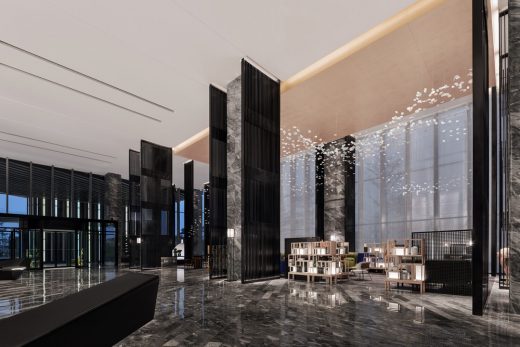
photograph : En Xiao
Le Méridien Zhongshan
Recent building design by COOP HIMMELB(L)AU on e-architect:
PANEUM – Wunderkammer des Brotes, Asten, Austria
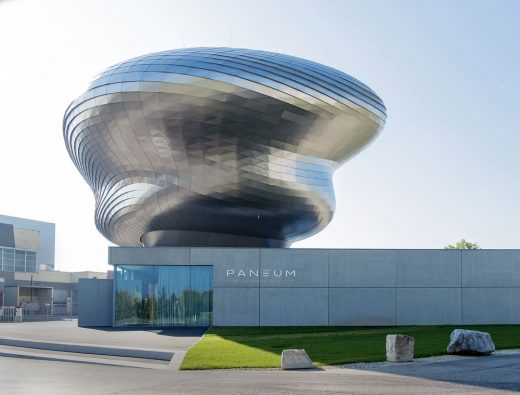
photograph © Markus Pillhoferau
PANEUM – Wunderkammer des Brotes
Chinese Architect – Design Practice Listings
Dune Art Museum, Qinhuangdao, Hebei province, northeastern China
Design: OPEN
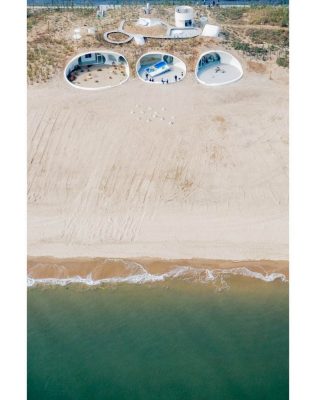
photograph © WU Qingshan
Dune Art Museum in Qinhuangdao
Pottery and Colored Glaze Workshop, Boshan District, Zibo City, Shandong Province
Architects: Co-Direction Design
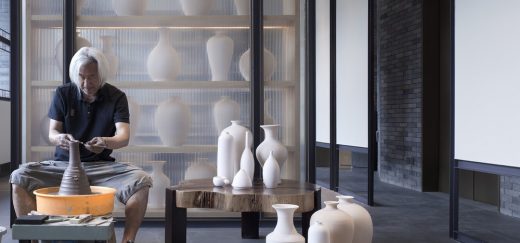
photograph : Jing Xufeng
Shandong Province Buildings
Comments / photos for the Xingtai Science and Technology Museum in the Hebei Province page welcome
Website: Hebei Province

